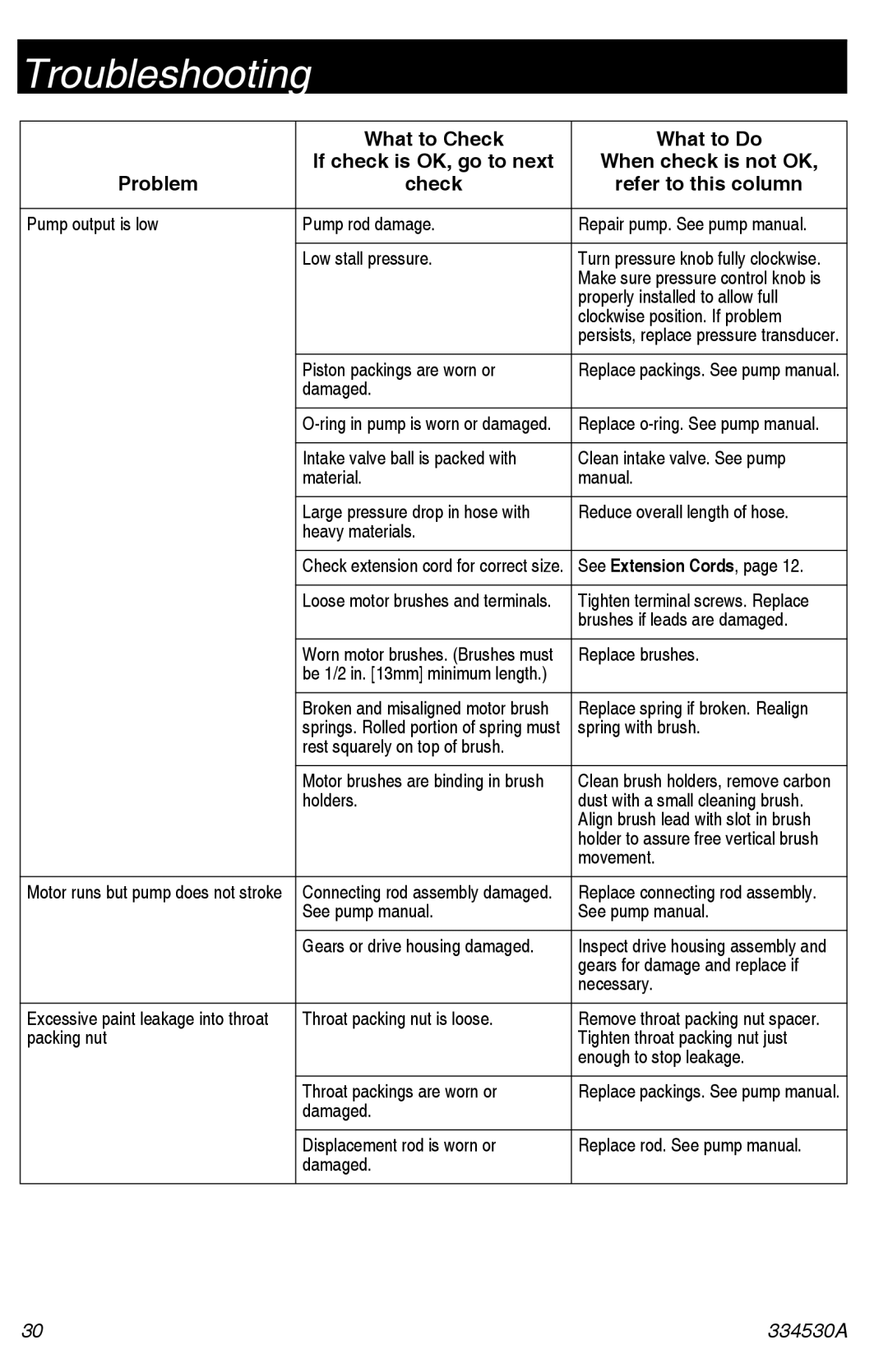Troubleshooting
| What to Check | What to Do |
| If check is OK, go to next | When check is not OK, |
Problem | check | refer to this column |
|
|
|
Pump output is low | Pump rod damage. | Repair pump. See pump manual. |
|
|
|
| Low stall pressure. | Turn pressure knob fully clockwise. |
|
| Make sure pressure control knob is |
|
| properly installed to allow full |
|
| clockwise position. If problem |
|
| persists, replace pressure transducer. |
|
|
|
| Piston packings are worn or | Replace packings. See pump manual. |
| damaged. |
|
|
|
|
| Replace | |
|
|
|
| Intake valve ball is packed with | Clean intake valve. See pump |
| material. | manual. |
|
|
|
| Large pressure drop in hose with | Reduce overall length of hose. |
| heavy materials. |
|
|
|
|
| Check extension cord for correct size. | See Extension Cords, page 12. |
|
|
|
| Loose motor brushes and terminals. | Tighten terminal screws. Replace |
|
| brushes if leads are damaged. |
|
|
|
| Worn motor brushes. (Brushes must | Replace brushes. |
| be 1/2 in. [13mm] minimum length.) |
|
|
|
|
| Broken and misaligned motor brush | Replace spring if broken. Realign |
| springs. Rolled portion of spring must | spring with brush. |
| rest squarely on top of brush. |
|
|
|
|
| Motor brushes are binding in brush | Clean brush holders, remove carbon |
| holders. | dust with a small cleaning brush. |
|
| Align brush lead with slot in brush |
|
| holder to assure free vertical brush |
|
| movement. |
|
|
|
Motor runs but pump does not stroke | Connecting rod assembly damaged. | Replace connecting rod assembly. |
| See pump manual. | See pump manual. |
|
|
|
| Gears or drive housing damaged. | Inspect drive housing assembly and |
|
| gears for damage and replace if |
|
| necessary. |
|
|
|
Excessive paint leakage into throat | Throat packing nut is loose. | Remove throat packing nut spacer. |
packing nut |
| Tighten throat packing nut just |
|
| enough to stop leakage. |
|
|
|
| Throat packings are worn or | Replace packings. See pump manual. |
| damaged. |
|
|
|
|
| Displacement rod is worn or | Replace rod. See pump manual. |
| damaged. |
|
|
|
|
30 | 334530A |
